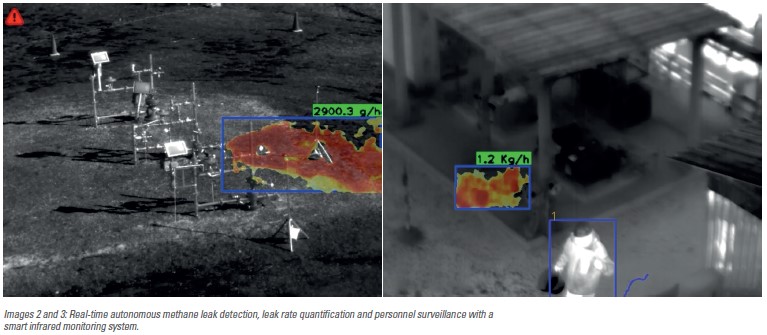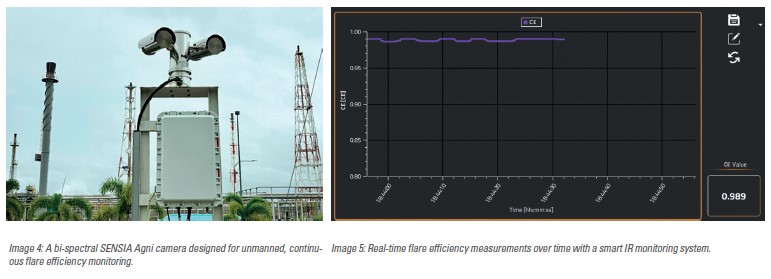In a period of industrial transition, technological breakthroughs are adopted in the face of adversity. With unprecedented energy, metal, and chemical demand fueled by the green transition and growth in emerging economies, combined with the technological advancements of artificial intelligence (AI) and digitalization, the world is entering a new industrial age. This rapid change places the expectation on industrial leaders to improve general well-being while prioritizing environmental responsibility and safety.
By Francisco Cortés PhD, Chief Executive Officer (CEO) – Sensia Solutions
Emerging technologies make possible the balancing of growth in industrial demand with societal responsibility. They do this by enabling sustainable energy, safe workplace environments, and improved operational efficiency through automation and AI. These contributions to twenty-first-century industry are irrefutable. Today’s industrial challenges involve maintaining high productivity via AI and automation while avoiding fugitive emissions that degrade air quality and contribute to global warming. This means balancing environmental regulation compliance with reducing operational costs and increasing safety.
The sensorization of industrial assets enables health, safety, and environment (HSE) operations to be optimized with minimal human intervention, achieving fully autonomous operations in some cases. Operators can rely on these sensors to anticipate component failures, take preventive and corrective actions, and detect early signs of gas leaks, fire outbreaks, or even vandalism.

One of the most versatile sensing technologies, offering a high level of multi-response capabilities, is intelligent infrared (IR) imaging. Until recently, IR imaging added significant value to industrial operations through remotely detecting hot spots via thermography, gas leaks through optical gas imaging (OGI) inspections, and more – but always under human supervision. Recent improvements in microprocessor computational power and breakthroughs in AI have now made it possible to automate real-time detection and system actions with smart IR imaging-based solutions.
Smart IR imaging systems, as seen in Image 1, are already transforming industrial operations, with particular added value in oil and gas operations through methane emissions monitoring at upstream, midstream, and downstream facilities worldwide. The integration of AI-powered leak detection and quantification (LDAQ) algorithms into OGI cameras is helping operators meet critical methane emissions reporting under the Oil and Gas Methane Partnership (OGMP) 2.0 framework, and regulations from both the European Union and the United States. These systems simultaneously enhance HSE standards and boost operational efficiency. This game-changing solution for continuous, autonomous monitoring is already in use across industries, monitoring gas leaks, measuring flare combustion efficiency and more in Europe, the Middle East, Southeast Asia, and the Americas.
AI and Smart IR Imaging Technology
Smart IR imaging systems are a fully autonomous solution consisting of state-of-the-art IR cameras, AI-powered processing software, and analytics—a combination that not all providers can easily master. IR imaging, known for its surveillance applications, is highly effective at detecting various gases. Methane and other hydrocarbons have clearly defined IR absorption levels in the mid-wave (MWIR) and long-wave (LWIR) infrared spectrum regions. Short-wave (SWIR), which is close to visible light, requires sunlight to detect only very large leaks, whereas cameras based in other regions of the IR spectrum can continue to detect, 24/7. OGI cameras are equipped with spectrally tuned IR detectors to focus on narrow IR bands. These detectors reveal what is invisible to the naked eye, such as the temperatures of components and invisible flames and gases. However, the process doesn’t end there.
AI analytics and the proper processors handle the final steps in smart IR imaging, including actual detection confirmation of gas, flame, temperature, and other factors, followed by alarm generation and communication to the distributed control system (DCS), report creation, and other preset actions. AI, used to automate detection, is trained with physics-based models and real scenarios involving various detection targets. This results in faster, more accurate and reliable performance without human oversight. In addition to real-time gas detection and quantification at site and component levels, intelligent IR imaging technology performs flame detection, intelligent thermography, surveillance, and flare efficiency monitoring, further enhancing safety and operational standards. See Images 2 and 3 for detection and gas leak rate quantification examples from the field.
A Game-Changer for Emissions Regulation and Reporting
New climate initiatives and regulatory authorities worldwide are paying closer attention to oil and gas, metal refining, and other heavy industries to monitor and mitigate pollutant and greenhouse gas emissions. Advanced technologies like smart continuous IR monitoring systems offer reliable, cutting-edge solutions that help operators not only identify and manage gas leaks such as methane, sulfur dioxide, and ammonia, but also comply with increasingly stringent regulations.
The OGMP 2.0 framework, an initiative of the United Nations Environment Programme (UNEP), is a key standard that can be met using smart IR monitoring systems. OGMP 2.0 members must meet reporting benchmarks for methane emissions. At Level 5—the highest reporting level—operators must provide direct quantitative measurements and reconcile discrepancies between site-level and source-level data. Operators are also required to report methane emissions from equipment leaks, venting, incomplete combustion, and flaring.
Smart IR imaging technology is well-suited for methane emissions regulation compliance because of its advanced leak detection and quantification capabilities, which enable round-the-clock facility monitoring. Several studies have shown that intermittent emission events significantly contribute to total methane emissions. Only continuous and reliable monitoring solutions are effective in understanding the behavior of these emissions and correlating them with operational factors, enabling informed decision-making. Additionally, regulatory trends suggest an increase in inspection frequency, further supporting the need for continuous monitoring.
Methane is just one among many harmful pollutants, refrigerants, and toxins subject to regulation. Smart IR imaging also detects fugitive emissions of other regulated gases like sulfur dioxide, ammonia, ethylene, and carbon dioxide in real-time, ensuring compliance, sustainability, and the mitigation of environmental, safety, or public health disasters. Smart IR imaging systems bridge the gap between operational efficiency and HSE objectives, ensuring through autonomous continuous monitoring that such disasters do not occur.
Flare Efficiency Monitoring with Smart IR
Incomplete combustion of flares is another significant source of methane emissions targeted by regulatory bodies. The main cause of inefficiency is turbulence at the flare boundary, which cools the combustion process and displaces fuel from the burning zone into the atmosphere. This turbulence can be caused by wind or assistance, making continuous efficiency monitoring essential for accurately assessing unburned methane and its impact on emissions inventories.
Smart IR imaging can meet new minimum flare efficiency requirements by visualizing unburned hydrocarbons such as methane, and comparing the unburned input gases to the resulting carbon dioxide output. Both carbon dioxide and hydrocarbons are present in the infrared spectrum but at different wavelengths. Therefore, a bi-spectral camera, such as the system shown in Image 4, is needed to assess the gases at different IR bands. Operators receive real-time reports (Image 5) of flare conditions and efficiency changes – destruction, removal efficiency, or combustion efficiency – according to their needs. This significantly improves measurement accuracy and frequency to meet regulatory requirements.
The Multi-Industry Adoption of Smart Infrared
Oil and gas majors, global metal refining companies, leading chemical manufacturers, and other industries continue to consider and adopt this revolutionary approach to meet HSE challenges. From sustainable offshore platforms in the North Sea to metal refining plants in Europe and beyond, operators recognize the advantages of smart infrared monitoring systems for emissions measurements, surveillance, and preventive maintenance.
In one offshore case, a sustainable platform in the North Sea powered entirely by wind energy installed an explosion-proof camera and pan-and-tilt system for autonomous emissions monitoring. Despite the harsh offshore environment, the system performs at the highest caliber, providing real-time site-level emissions data essential for regulatory compliance and operational efficiency. This technology helps operators further minimize environmental impact while maximizing production on a sustainable platform. When intelligent thermography detected components operating above maximum temperature thresholds, it created alerts to anticipate a component failure.
In another case, a leading copper refining company in Europe integrated a smart IR imaging system to detect sulfur dioxide (SO2) emissions in real time. The system was installed near the smelting furnace, where an outflowing SO2 pipe crossed close to office areas. Seven cameras now provide automated gas leak detection. Given the harsh environment due to corrosive vapors, the equipment was designed with anti-corrosive enclosures and pressurized air systems. The system’s success prompted the company to extend it to other sectors of the plant, improving safety and minimizing the threat of leaks that could damage the plant or surrounding ecosystems (high SO2 concentrations can lead to acid rain).
Smart IR imaging for flare efficiency monitoring is particularly valuable for upstream oil and gas sites. Capable of observing multiple flares from the ground or a mast, operators program tours and presets to monitor flares 24/7, completely unattended. The continuous readings over long periods offer valuable information regarding efficiency that was previously assumed or estimated.


The Future of Emissions Monitoring, Workplace Safety and Preventive Maintenance
Global industry is at a crucial moment, experiencing ever increasing pressure to reduce its environmental footprint while maintaining operational efficiency. Energy, metal, and chemical demand is only expected to rise. Technologies like smart infrared imaging, with AI-powered software and analytics and cutting-edge IR cameras, are helping operators worldwide navigate regulatory and safety challenges by providing the tools to monitor, report, and mitigate gas emissions and accidents in real-time. As methane regulations continue to tighten both internationally and nationally, the importance of reliable and precise methane emissions monitoring will only increase.
The versatility of intelligent IR systems, exhibited in their adoption by oil and gas majors, metal refining companies, and chemical manufacturers worldwide, highlights their potential to revolutionize emissions monitoring. This includes mitigating fugitive emissions and improving flare efficiency in real-time. As more operators embrace advanced technologies like smart infrared monitoring, society moves closer to achieving sustainability and digitalization goals, reducing its environmental footprint, and mitigating climate change impacts while overcoming health and safety challenges. Smart infrared technology is a game-changer for emissions monitoring, preventive maintenance, and safety in this new age of automation and AI.



